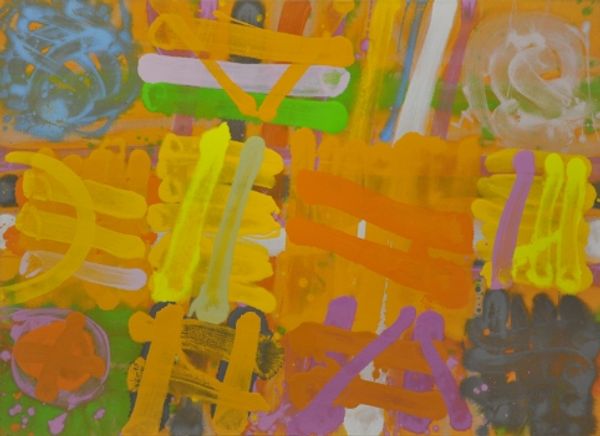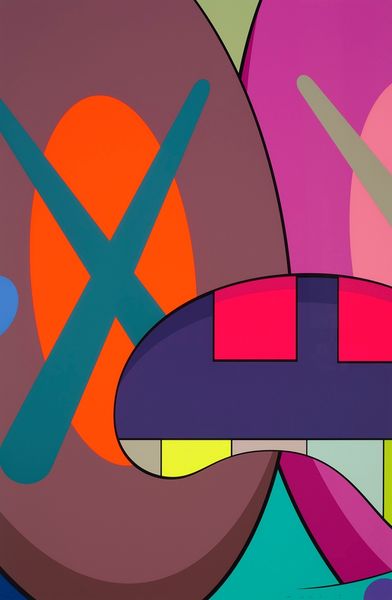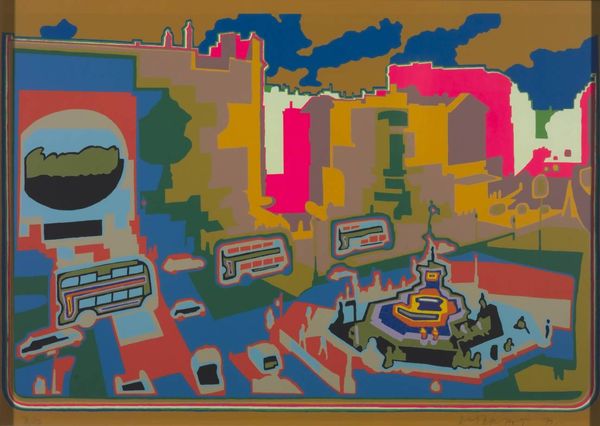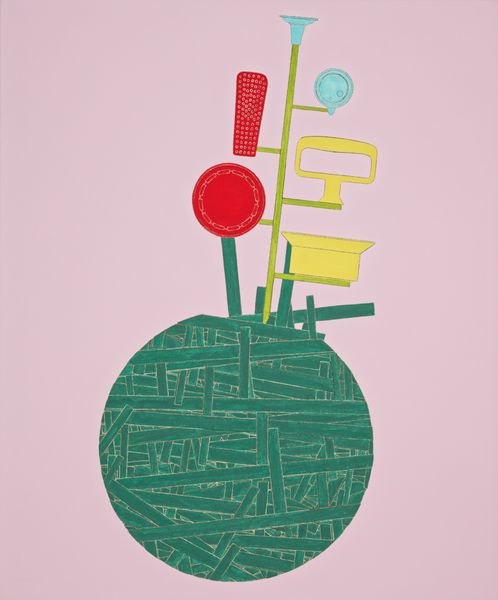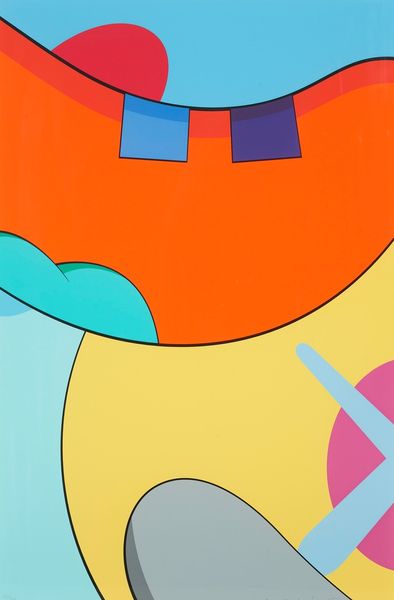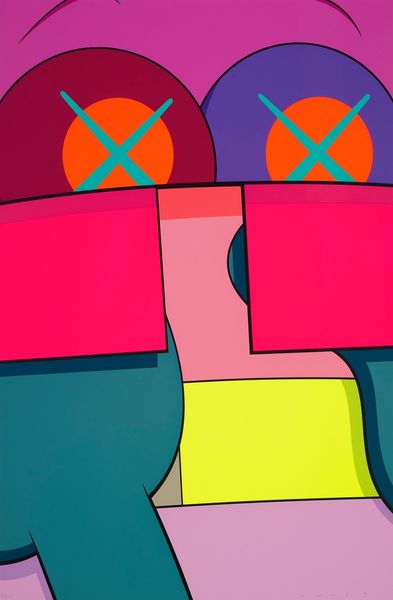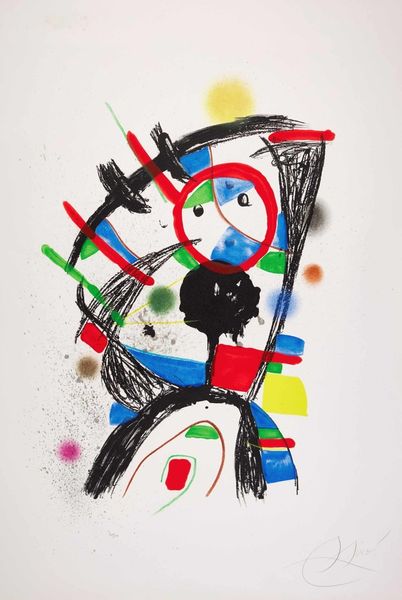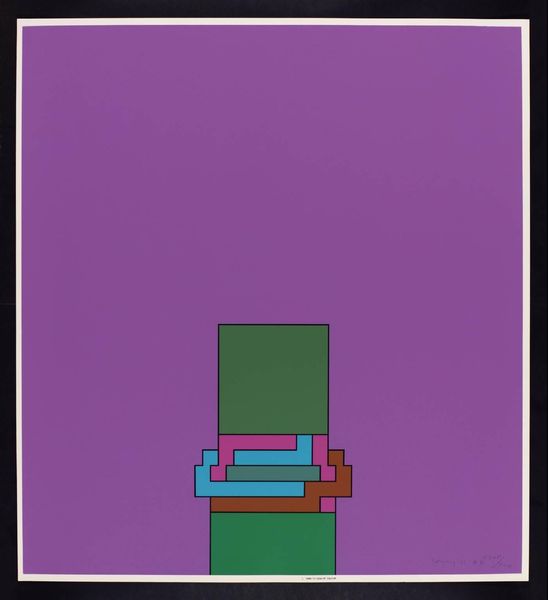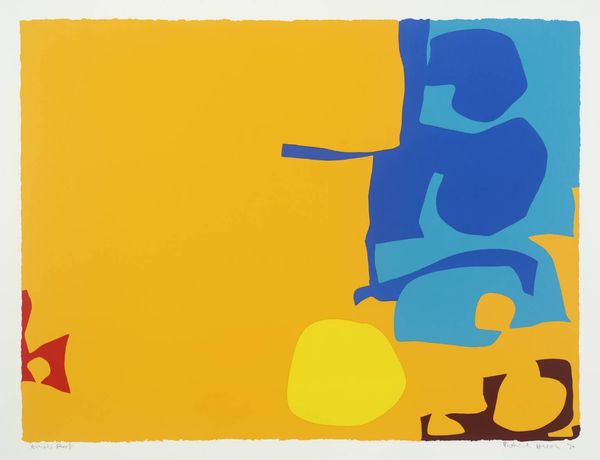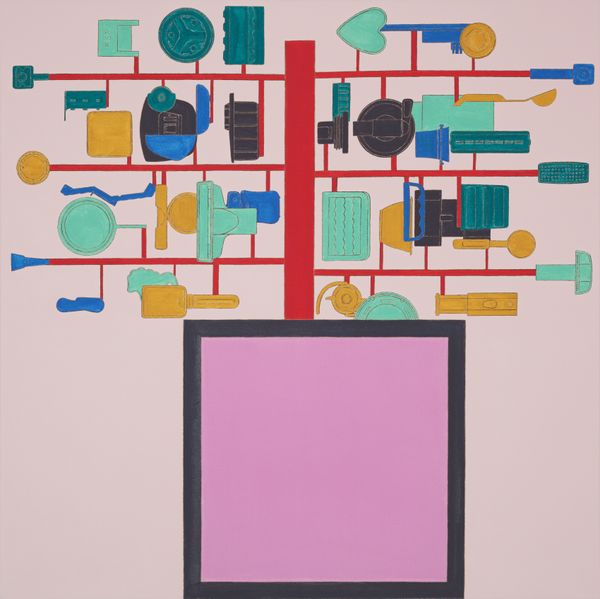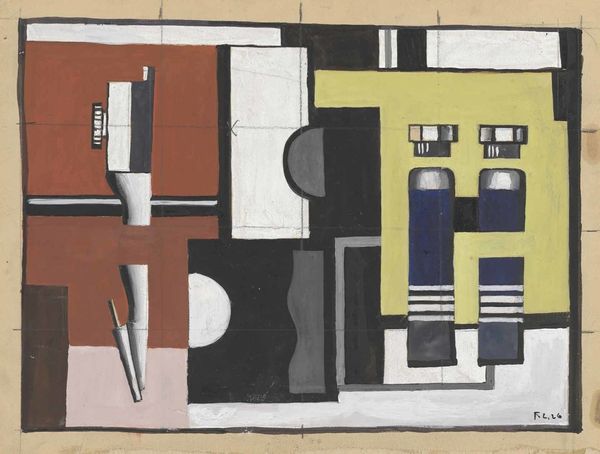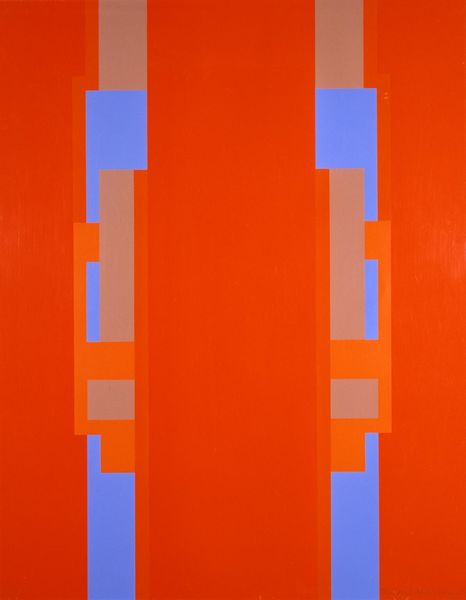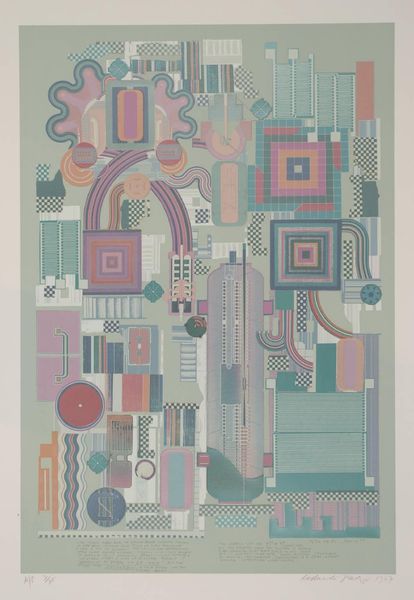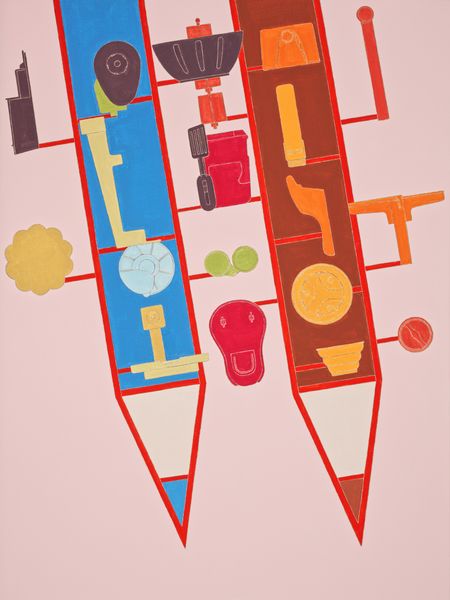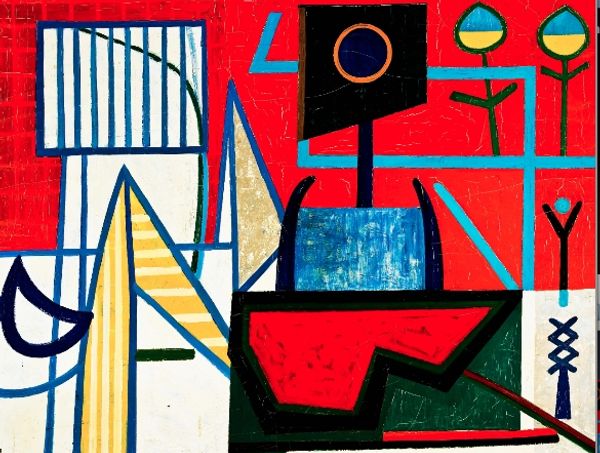
Dimensions: object: 1897 x 1080 x 1070 mm
Copyright: © Parviz Tanavoli | CC-BY-NC-ND 4.0 DEED, Photo: Tate
Editor: This is Parviz Tanavoli's sculpture, "The Poet and the Beloved of the King." It’s made of various materials, and I find the figures quite playful, like characters from a children's story. How do you interpret this work in its socio-political context? Curator: The figures resonate with the tensions between tradition and modernity in mid-20th century Iran. Tanavoli often used such forms to subtly critique political power. Editor: Power? How so? Curator: Well, consider the scale and the interaction between the two figures. Who do you think controls access to the "beloved"? Also, the text on the sculpture – what might that signify in terms of public voice and censorship? Editor: That's fascinating. I hadn't considered the implications of access and control. It makes me see the piece in a totally new light. Curator: Exactly! It reflects how art shapes public opinion, even in seemingly whimsical forms.
Comments
tate 7 months ago
⋮
http://www.tate.org.uk/art/artworks/tanavoli-the-poet-and-the-beloved-of-the-king-t13684
Join the conversation
Join millions of artists and users on Artera today and experience the ultimate creative platform.
tate 7 months ago
⋮
Motifs taken from Iranian religious folk art recur in Tanavoli’s work, especially the saqqakhaneh, a sacred fountain protected by metal grills. Here he reappropriates the grill, extracted from its original function and applied to robot-like figures made out of brightly coloured, pop-inspired materials. The two figures relate to characters from a love story which forms part of Shahnameh (977–1010), the national epic of Iran. Shirin, a princess, and Farhad, a stone cutter given the impossible task of carving a passage through Mount Bisotoon to win Shirin’s hand. Gallery label, March 2019
